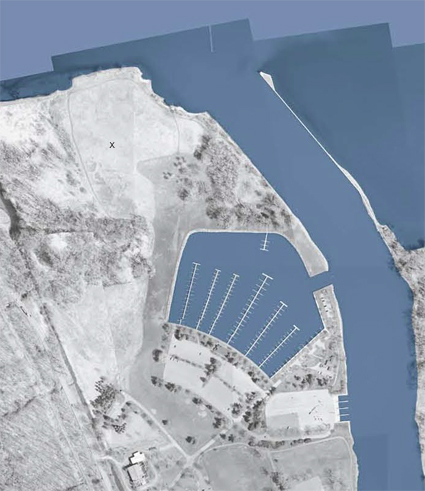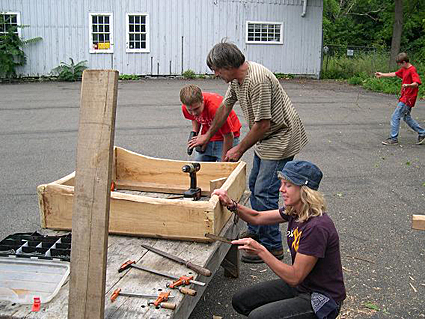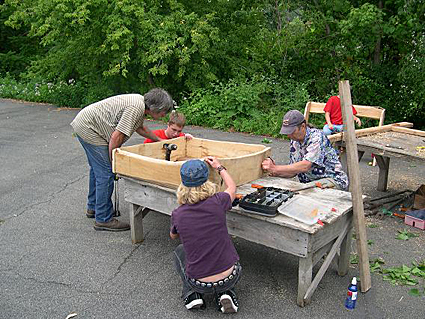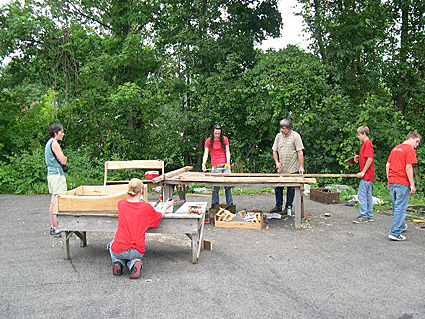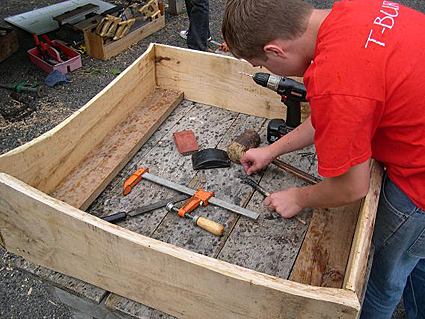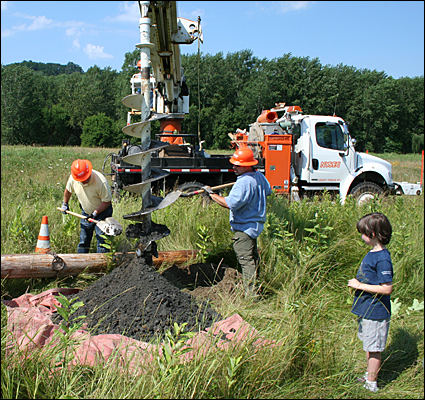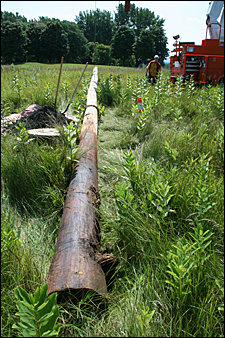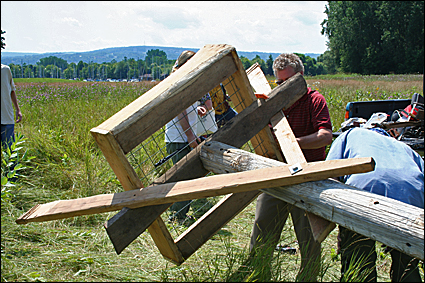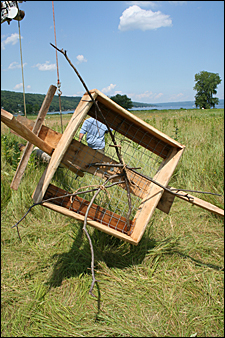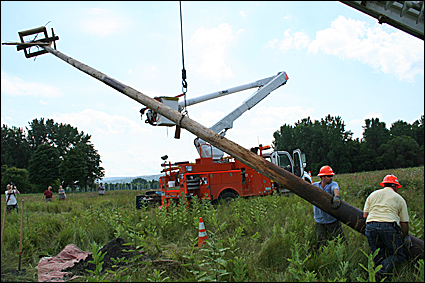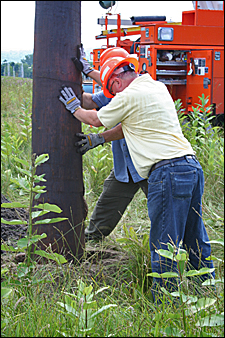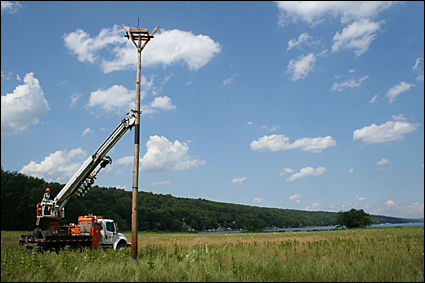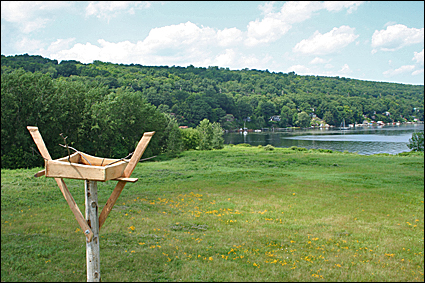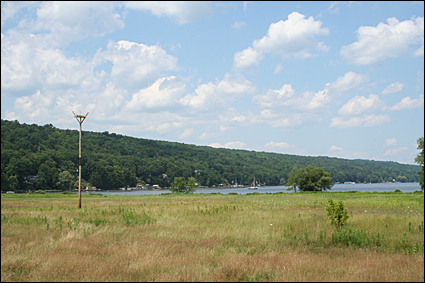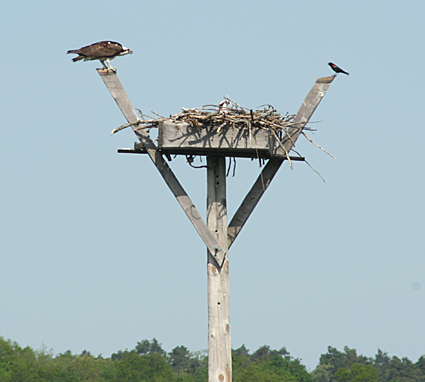Home > Recreation > Treman MarinaTreman Marina Osprey Nest PlatformOspreys are large fish-eating hawks that nest near bodies of fresh and salt water. Ospreys were once descimated by the effects of DDT. They are now making a comeback in the Finger Lakes region, especially on Cayuga Lake where they have been breeding for a number of years near Montezuma National Wildlife Refuge.
Ospreys begin breeding when they're three or four years old. The young birds from Montezuma are now looking for nest sites of their own. A platform was installed at Treman Marina on 1 August 2009. Location (X marks the spot)
Who Worked on This Project?♥ New York State Electric and Gas (NYSEG) donated the 45'-pole and its installation. Contact Community Outreach Officer Robert Pass at rlpass@nyseg.com, 607-762- 6298 ♥ New York State Office of Parks Recreation and Historic Preservation (OPRHP) donated the site (Treman Marina). Contact Park Manager John Guilford at john.guilford@oprhp.state.ny.us, 607-273-3440 (N.B. John Guilford has retired. The current park manager is Kathie Notarfonzo. Contact her at the same phone number and this e-mail address: kathie.notarfonzo@parks.ny.gov) ♥ Bill Evans, executive director of Old Bird, donated ornithological expertise. Contact Bill at admin@oldbird.org, 607-272-1786 ♥ Ronda Roaring, owner/publisher or ILovetheFingerLakes.com donated the Web page and her public relations expertise. Contact her at publisher@ilovethefingerlakes.com. ♥ Black Locust Initiative and youth from Trumansburg/Ulysses Youth Services in Trumansburg, New York constructed the nest box. Contact Executive Director Dave Gell at 607-387-6750
The following photos are posted here for use by the press.
Photo 1-Dave Gell, executive director of Black Locust Initiative, with his assistant Melanie, and Zack of Trumansburg/Ulysses Youth Services work on an osprey nest box made of black locust. Credit: Bill Evans
Photo 2-Dave Gell of Black Locust Initiative and his assistant Melanie work with a group from Trumansburg/Ulysses Youth Services on the osprey nest box. Credit: Bill Evans
Photo 3-Dave Gell, executive director of Black Locust Initiative, works with a group of teenagers from Trumansburg/Ulysses Youth Services on an osprey nest box made of black locust. Credit: Bill Evans
Photo 4-Zack, a member of Trumansburg/Ulysses Youth Services, works on the osprey nest box to be installed at Treman Marina. Credit: Bill Evans
Photo 5-New York State Electric & Gas (NYSEG) crew members drill the hole for the pole in the meadow at Allan H. Treman State Marine Park. Credit: Ronda Roaring
Photo 6-The used cedar pole is 45 feet long, 7 feet of which was sunk in the ground. Credit: Ronda Roaring
Photo 7-The nest box is attached to the pole using bolts going through the box into the top of the pole. Credit: Ronda Roaring
Photo 8-Sticks are tied in the nest box to give the ospreys a hint as to what to do. Credit: Ronda Roaring
Photo 9- The pole is winched up to position it above the hole. Credit: Ronda Roaring
Photo 10-The pole is positioned over the hole by members of the NYSEG crew. Credit: Ronda Roaring
Photo 11-The pole is held in place so that dirt can be packed into the hole. Credit: Ronda Roaring
Photo 12-A bird's-eye view of the lake from the nest platform. Credit: Ronda Roaring
Photo 13-A human's-eye view of the nest. The brown mark on the pole is actually brown aluminum sheeting nailed to the pole to prevent animals from climbing into the nest. Credit: Ronda Roaring
Photo 14-On 13 May 2012, the male osprey is perched on the platform, trying to get rid of a male redwing blackbird, who also liked the view. The female osprey's head can be seen in the center of the nest material. Credit: Ronda Roaring
Updated 14 March 2021
|
|
|


